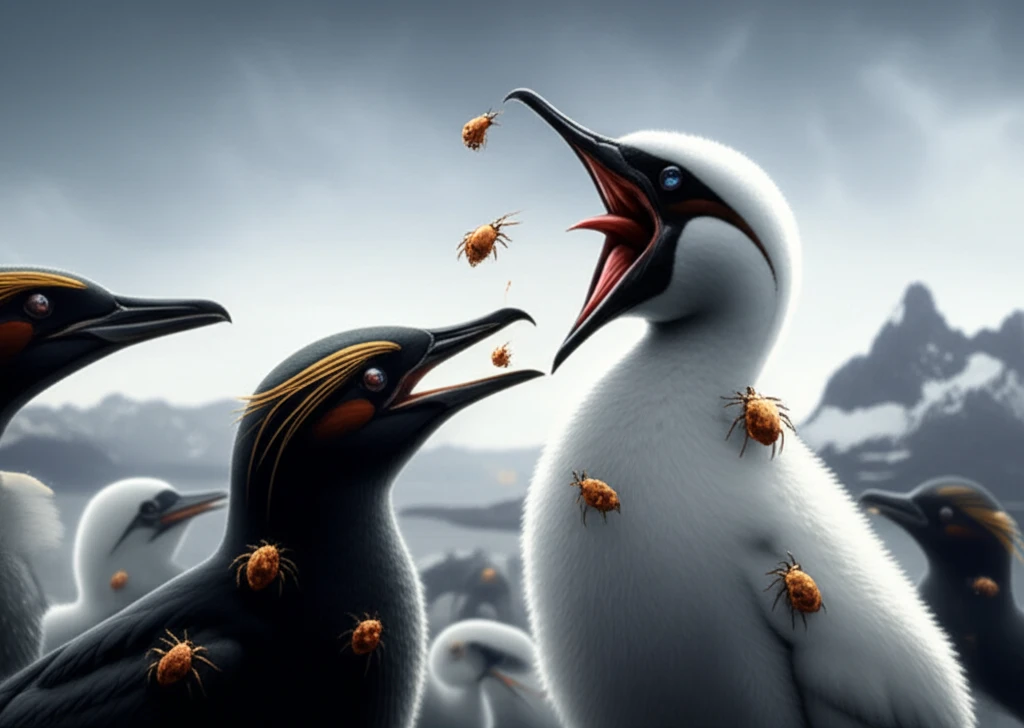
Lousy Chicks? Imperial Shag Lice Infestation Uncovered!
"Dive into the surprising world of seabird parasites and discover how lice species are adapting to survive on Imperial Shag chicks in Patagonia."
The Imperial Shag, a prominent seabird along the Patagonian coast, faces numerous ecological challenges. While its reproductive habits and feeding patterns have been extensively studied, the parasites affecting this species remain largely unexplored. This article sheds light on a recent discovery concerning lice infestations in Imperial Shag chicks, offering new insights into the lives of these seabirds and their tiny companions.
Lice, small wingless insects, are obligate ectoparasites of birds and mammals. They can cause significant irritation and health problems for their hosts. This study focuses on two particular lice species found on Imperial Shag chicks in Punta León, Argentina, investigating their prevalence, intensity, and potential impact on the young birds.
By examining the infestation patterns of these lice species, researchers aim to understand the dynamics of parasite-host interactions in seabirds. This includes how lice are transmitted from parent to chick and any species-specific adaptations that allow them to thrive in this unique environment.
Lice on Imperial Shag Chicks: What We Found

A detailed examination of 41 Imperial Shag chicks revealed two species of lice thriving on these young birds: Pectinopygus turbinatus and Piagetiella caputincisum. Pectinopygus turbinatus was found on the body of the chicks, while Piagetiella caputincisum inhabited their oral cavity. The study marks the first time P. turbinatus has been documented on this host and the first record of P. caputincisum in continental Argentina.
- High Infestation Rates: 93% of chicks had lice.
- Two Lice Species:Pectinopygus turbinatus on the body and Piagetiella caputincisum in the oral cavity.
- No Difference in Prevalence: Both species were equally common.
Why This Matters: Implications for Seabird Health
This research provides valuable baseline data on the parasites affecting Imperial Shag chicks. Understanding the types of lice present, their transmission patterns, and their potential impact on chick health is crucial for conservation efforts. Lice infestations can cause dermatitis, excessive scratching, and overall weakened condition in birds, potentially affecting their survival rates.
The study also highlights the intricate relationship between seabirds and their parasites. The differences in infestation patterns between P. turbinatus and P. caputincisum suggest species-specific adaptations to the seabird's life cycle. Further research is needed to fully understand these adaptations and their implications for both the lice and their hosts.
Given that Imperial Shag chicks are most vulnerable in their early days, and considering the potential harm that Piagetiella caputincisum can inflict, future studies should investigate the specific effects of these lice on chick survival and development. This will help inform strategies to mitigate the impact of parasites on these important seabird populations.
